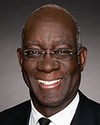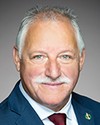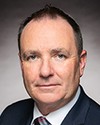Honourable chairman and members of the parliamentary Standing Committee on Veterans Affairs, it is a pleasure to appear in front of your committee again on behalf of our 250,000 members and their families.
As you mentioned, I'm the director of veterans services at the national headquarters of the Legion, and I am also a medically released military health care administrator. I have been assisting veterans, including still-serving members, those who have retired and their families for over 16 years now, in various roles in and out of uniform.
Since 1926, the Legion has been assisting veterans and their families with representation for disability benefits and appeals and for treatment. Our 27 professional and government security-cleared command service officers and assistants are located across the country and provide free assistance to thousands of veterans and their families every year.
We often hear their fears about employment post service, their ability to contribute to their families' finances, and their confusion as to the next steps to take. Therefore, we can speak confidently and with credibility on this subject.
First, the education and training benefit announced in budget 2017 helps veterans to achieve their education and employment goals to position themselves to be more competitively employable after service. This benefit has been well received by veterans. However, the government can do better.
The government recently renewed a contract for $10.3 million with Agilec to continue to help military members transition into civilian work after leaving the military. Despite their having assisted veterans for the past five years, there is no public data about the number of veterans they have helped or whether their program has been successful, whether it is satisfying their needs and whether it is doing what it was mandated to do. There's not enough data out there yet to speak on that.
In 2015, when Parliament passed the Veterans Hiring Act, to amendment the Public Service Employment Act with respect to priority hiring, the average age of military members who were medically released was about 37 years of age. The act mandated that they be given the highest level of priority in the public service. It has recently been reported that Veterans Affairs does not have the specific number of veterans it has hired. Indeed, we have also not heard any detail regarding how many veterans have been hired as a priority in other government departments.
The federal government public service is vast and has the capacity to hire many veterans in a variety of roles across departments. Now, at over seven years since the act was mandated, there is no data that we are aware of with respect to how effective the act has been nationwide in terms of hiring medically released veterans across the government.
It is important that all government departments acknowledge veterans. They have served our country with honour, and the majority expected to have a full career and to retire later in life. They are now struggling to find employment at an age at which they had no idea they would be unemployed, and they deserve better. It would be helpful to have this information to help determine where improvements can be made, whether new strategies should be implemented and, essentially, how effective it is.
Mr. Chairman, we would like to thank you for the opportunity to make this presentation, and I would be happy to take questions.





